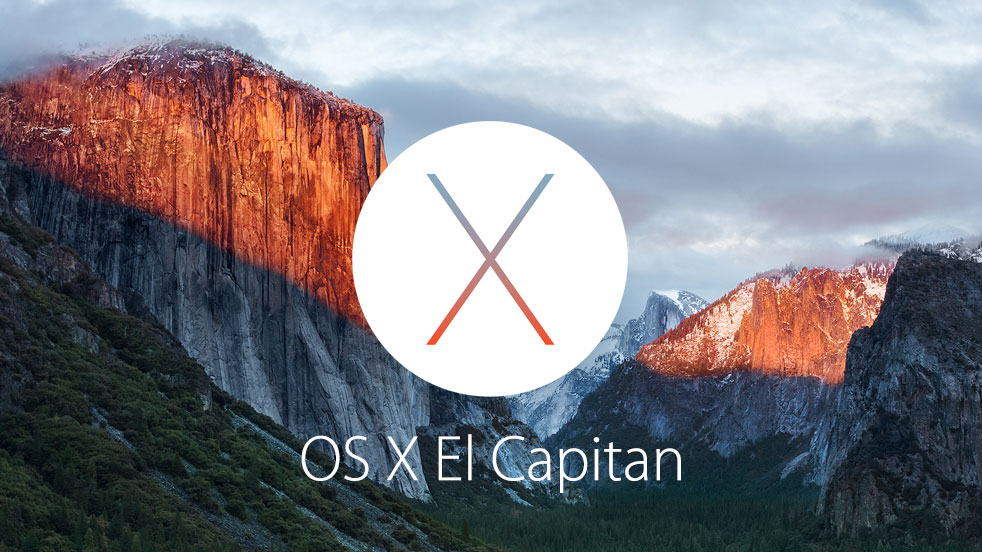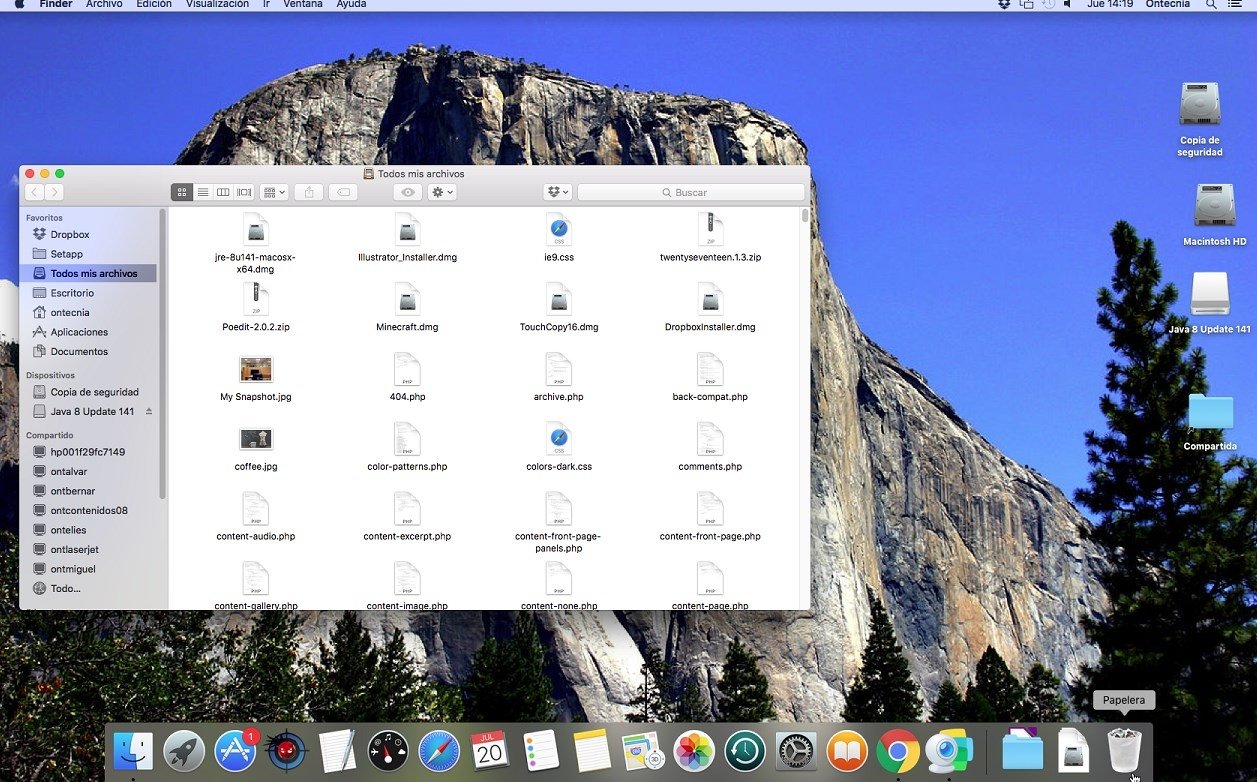Contents
On September 29, 2015, Apple announced that OS X El Capitan, the latest major release of the world’s most advanced desktop operating system, will be available on Wednesday, September 30 as a free update for Mac users. El Capitan builds on the groundbreaking features and beautiful design of OS X Yosemite, refining the Mac experience with.

- 2. El Capitan Features
- 3. El Capitan Download & Install
- 4. OS X 10.11 Problems
- 5. Mac OS X 10.11 Tips
- 6. Software for OS X 10.11
- 7. Compare OS
Mac Os X El Capitan Update
Mac OS X El Capitan can be downloaded directly from the Apple website. The Beta version of the OS is available but the final version will be made available towards the Autumn season of 2015 as speculated by many Apple users. You can use your older Mac OS with the new El Capitan, all you have to do is to create a different partition for the new El Capitan if you have the Yosemite already installed. There are few steps you should consider in downloading the latest El Capitan and these are as follow.

Part 1. Preparing Mac Device for the Installation of Mac OS X El Capitan
Both Mavericks and Yosemite are easier to download and install on Mac devices, however, this is not the case with Mac OS X El Capitan. Just before you install the new Mac OS X El Capitan, you must perform few tasks to ensure that your Mac will be ready for the installation of the software:
- Check Your Mac - Check whether your Mac will be able to run the new OS X 10.11. Apple has provided a list of the Mac supported by the new Mac OS X El Capitan and if you are already running the Mavericks or Yosemite, the same lists may also apply to the El Capitan. You can also check this list on the “Will your Mac run Mac OS X” article on Apple website.
- Create Enough Space - Check that your Mac has sufficient RAM to run the software. You wouldn’t run into any hitches if your Mac device is listed on the acceptable Mac devices for Mac OS X El Capitan. Apple recommend that you have a minimum RAM of 2G, however, a minimum of 4G space of RAM is highly recommended. You will also need to delete some unnecessary files to create more space for the installation of El Capitan.
- Check Hard Drive Space - Make sure you have sufficient hard drive space for the installation of Mac OS X El Capitan. Yosemite will normally require a Hard drive space of up to 5GB , but the new El Capitan will require between 15g and 20gb of space on your hard drive for successful download and installation.
- Register - Register to access the Mac Apple store. You need to upgrade your Mac and get access to Mac Apple store for a small fee in order to get the most out of your Mac OS X El Capitan.
- Updates - Make sure your third party Apps are updated before installing Mac OS X El Capitan. You can simply launch App store and click on “Updates” on the tool bar if you want to update the apps you bought from Apple store. For other third party apps, you may need some manual updates from manufacturer websites to complete such updates.
- Backup Your Mac - Perform a backup before downloading and installing Mac OS X El Capitan- you need to protect your important documents and files, thus you may have to back them up somewhere before starting the download and installation process.
Part 2. Installing Mac OS X El Capitan Safely on Your Mac Device
You can install or upgrade to Mac OS X El Capitan as a dual boot partition. You may be able to download a test version if you register for the OS X Seed program from Apple, and you can also provide a feedback to Apple in order for the company to update the software before it is finally released. You can follow these instructions to install the Beta version of Mac OS X El Capitan. It is strictly recommended that you perform a backup before you begin this process. It is important you keep in mind that Mac OS X El Capitan is still in a Beta format, thus , not all your apps or programs will work on it.
- Visit the Apple Beta software program page and log unto the page using your Apple ID. Simply click on “Enroll your Mac”.
- Click on the download link that shows up, and enter the personal redemption code given to you.
- Open the downloaded Mac OS X El Capitan software and preview the file in the Applications folder. Click “Continue” and then select “Agree”.
- Click on “Install” and then enter your admin password. You're all set!
Part 3. Installing Mac OS X El Capitan Safely on an External Drive
You don’t have to install Mac OS X El Capitan on your Mac device, you can also install it on an external hard drive, most especially when you want to access the OS quickly. You can consider Thunderbolt drives which are similar to the internal drives on Mac, or you can simply use the USB 3.0 external drive if you don’t have the Thunderbolt on your Mac. You will have to format an external drive before installing Mac OS X El Capitan, this will help to install the Mac OS X El Capitan safely on the hard drive and at the same time the configuration of your device will not be changed.
Step 1. Launch Disk UtilityConnect the external drive to your Mac device and make sure it is detected. Launch the Disk Utility tool ( go to “Utilities” and you will find it there). Choose the drive- it is located at the side bar.
Step 2. PartitionSimply click on “Partition”. Make sure the partition layout reads “1 partition”. Name the partition. You can use a name like “Mac OS X El Capitan”. Click on “Options” and ensure that the Guide partition table is chosen, and then click on “Ok”.
Step 3. OptionsClick “Apply'. Open the preview file from your Mac’s application folder. Click on “Continue”. Click on the “Agree” button.
Step 4. OpenClick on “Show all disks”. Simply highlight the “External Hard Drive” on which you have just install the Mac OS X El Capitan
Step 5. InstallClick on “Install”, and enter the admin password.
With yesterday’s software updates El Capitan fell off the security patch bandwagon, as expected. Apply historically only patches software for the current software plus two versions prior. So that means Mojave, High Sierra, and Sierra. The good news though, is that if you have a compatible computer software upgrades from Apple are free.
Not sure what version you are running? Here’s how to find out. Don’t assume that you’re on the latest version because your computer automatically updates itself. Normally auto-update only installs updates for your current software. Usually it will offer to upgrade you to a new version once, but if you dismiss the offer to upgrade it doesn’t persist. You then have to choose to get it from the Mac App Store.
If you have a computer running El Capitan still I highly recommend you upgrade to a newer version if possible, or retire your computer if it cannot be upgraded. As security holes are found, Apple will no longer patch El Capitan. And at some point shortly after that software developers will stop making their software compatible which you’ll first notice means your web browser will stop functioning properly on the internet.
If you insist on keeping an obsolete computer please be careful and be aware of the risks. You should at the very least stop using Safari since that’s communicating directly with the internet and is no longer going to get updated. Firefox is a good alternative because they often support system software for two years longer than Apple does. Google Chrome only maintains support about one year after.
As an alternative to completely retiring the computer, you can install an alternate OS such as Linux, but the specifics of that are far more than I could cover in this post.
What Mac Can Still Download Osx El Capitan
For most people, I would suggest upgrading to macOS Mojave if your Mac supports it. Mojave will receive security patches until the fall of 2021. High Sierra will get security patches until fall of 2020, and Sierra until the
To find out what model and year Mac you have go to the Apple menu > About this Mac.
macOS Mojave runs on 2012 or later Macs (or 2010 Mac Pro desktops with an upgraded Metal-capable graphics card):
macOS High Sierra can run on any:

- MacBook late 2009 or later
- MacBook Air late 2010 or later
- MacBook Pro mid 2010 or later
- Mac mini mid 2010 or later
- iMac late 2009 or later
- Mac Pro mid 2010 or later
Download High Sierra on the Mac App Store.
What Mac Can Still Download Osx El Capitanl Capitan
macOS Sierra has the same requirements as High Sierra, so if you can I’d suggest going to High Sierra because it will receive security patches for longer. But if for some reason you’d rather move to Sierra you can download Sierra on the Mac App Store.